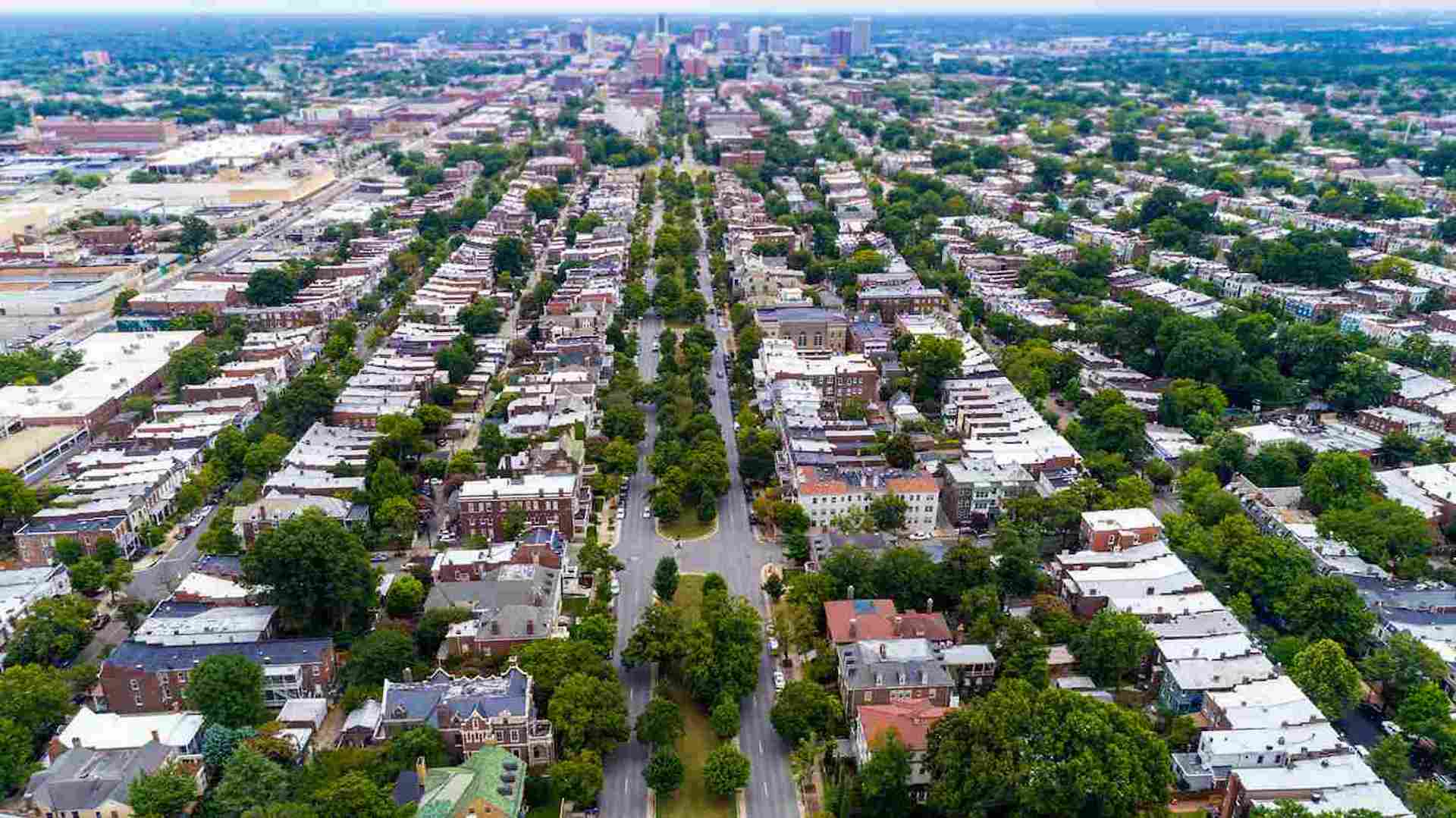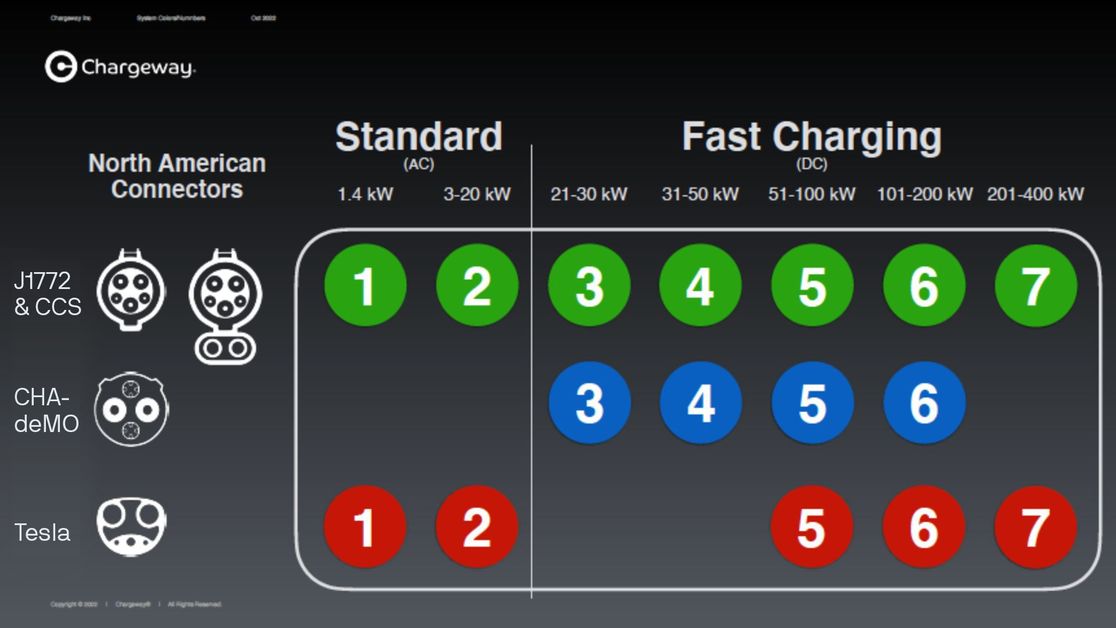| | | | | | | Presented By Capital One | | | | Axios What's Next | | By Joann Muller, Jennifer A. Kingson and Alex Fitzpatrick · Nov 07, 2022 | | Want more electric cars on the road? Then the industry needs to make charging easier to understand, Joann writes today. Today's newsletter is 1,020 words ... 4 minutes. | | | | | | 1 big thing: EV charging made simple |  | | | Illustration: Sarah Grillo/Axios | | | | Drivers typically know whether their car takes "regular" or "premium" gasoline. But when their fuel is electricity, filling up can be downright confounding, Joann Muller writes. - A new startup aims to fix that via a color- and number-coded system that helps electric vehicle (EV) drivers find the best chargers and plugs for their particular car.
Why it matters: Helping car buyers understand how charging works — and managing their expectations — is one of the biggest hurdles facing the EV movement. - EV consumer anxiety isn't just about finding chargers. Drivers also need to know which chargers work with their vehicle, how long it will take to "fill up" and how to pay.
- One problem: different cars require different connectors. A Nissan Leaf or Mitsubishi Outlander can use one type of plug, while most other EVs use a different connector — except for Teslas, which use a third, proprietary connector.
Also important to know: Home chargers and many of those often found at parking garages, grocery stores, malls and hotels are much slower than DC fast chargers. - Yet some fast chargers are quicker than others, with outputs ranging from 24 kW to 350 kW.
- It might seem intuitive to seek chargers with the highest output, but many cars are limited in how much power they can accept.
For example: Ford's F-150 Lightning and Hyundai's Ioniq 5 can both be plugged into a 350 kW DC fast charger. But the Ford only accepts up to 120 kW or 155 kW, depending on the truck's battery size. - In the nebulous world of EV charging etiquette, that pickup driver would be seen as a "charger hog" if they plugged into a 350 kW charger (because they would fill up just as quickly at a less powerful charger).
What's needed: A massive education effort. - "It's a big shift," acknowledges Jonathan Levy, chief commercial officer at charging provider EVgo.
- "Americans don't speak kilowatts or kilowatt-hours in their home, even though their monthly electricity bill says, 'here is how many kilowatt-hours you consumed.'"
Yes, but: The average driver doesn't want to learn a new language just to refuel their car, says Matt Teske, founder and CEO of Chargeway, a startup aiming to simplify EV charging. How it works: Chargeway's app uses colors to show your car's plug type and numbers to show the maximum power level it can accept: Chargeway aims to create a universal language to understand EV charging options. Image courtesy of Chargeway The app also includes a map showing the types of plugs and power levels offered at each charging site. - A timer feature helps users estimate how long they'll need to recharge.
- And if you plan a road trip, Chargeway will calculate where you should charge, based in part on factors like the weather and your typical driving habits.
What to watch: Teske hopes to create a universal language for charging and reports positive responses so far from government officials, carmakers and industry groups. Share this story. |     | | | | | | 2. 📊 America's EV hot spots |  Data: S&P Global Mobility; Chart: Axios Visuals Speaking of EVs: L.A., San Francisco and New York accounted for the largest shares of electric car registrations from January through August, Joann reports. - Those three metro areas made up more than a third of total EV registrations nationwide during that time period, per S&P Global Mobility data shared with Axios.
While it may seem like EVs are a coastal phenomenon, they're starting to get more popular in other parts of the country. - "More acceptance and much broader consumer awareness is resulting in a natural progression of adoption from the coasts to the heartland," said Tom Libby, associate director of loyalty solutions and industry analysis at S&P Global Mobility, in the firm's latest report.
Yes, but: Heartland adoption still has a ways to go. |     | | | | | | 3. Office-to-apartment conversions are skyrocketing |  Data: RentCafe; Note: Points are based on two-year periods. Chart: Tory Lysik/Axios Visuals Office building-to-apartment conversions hit a high last year and are poised to grow even more, according to a new report from rental platform RentCafe, Axios' Kate Marino writes. Why it matters: America had a housing shortage even before the pandemic drove demand for larger living spaces. Conversions are one way to attack the problem, especially if office occupancy stays low. By the numbers: Overall apartment conversions — including those of warehouses, hotels and health care buildings — jumped 25% during 2020-2021, to about 28,000 units, compared to the prior two-year period. - Office building conversions jumped the most — by 43%, to 11,090 units.
Look ahead: 77,000 apartment conversions are now in the works, RentCafe says. What we're watching: Cities such as New York, Los Angeles and Chicago are proposing plans to relax building rules and create tax breaks to encourage even more conversions. Read the rest. |     | | | | | | A message from Capital One | | "Everyone is feeling the squeeze" | | |  | | | | Home prices have increased nearly 19% year-over-year in the U.S., and rent prices grew at a record rate in early 2022. What Capital One is saying: "Each of us needs safe, decent, stable housing, and yet there are still many misconceptions about affordable housing." Here's how they're helping. | | | | | | 4. California pauses $1B in homeless funds |  | | | Photo illustration: Brendan Lynch/Axios. Photo: Allen J. Schaben/Los Angeles Times via Getty Images | | | | California Gov. Gavin Newsom is withholding $1 billion in homelessness funding from local governments, criticizing their strategies as "simply unacceptable," Axios' Megan Rose Dickey reports. Why it matters: Like many other states, California is in the throes of a homelessness crisis. - By withholding state funds, the governor hopes to cajole city and county leaders into pursuing more ambitious solutions.
Catch up quick: Various proposals recently outlined by local California governments would result in just a 2% decrease in homelessness statewide over the next four years. - At that pace, Newsom said, it would take decades to "significantly curb homelessness" across California.
- "As a state, we are failing to meet the urgency of this moment," he said.
Read the rest. |     | | | | | | 5. One fun thing: DC -> NYC, by air and sea |  | | | Tailwind Air lands on the East River and docks at 23rd Street and FDR Drive. Photo: Kristen Hinman/Axios | | | | What's it like to fly aboard Tailwind Air, a seaplane operator flying between the Washington, D.C. area and New York City? Axios Local bureau chief Kristen Hinman recently found out. Catch up quick: Tailwind's Dulles International Airport -> East River service began in mid-October. - Flights take about 80-95 minutes aboard a Cessna Caravan on floats, with room for eight passengers, two pilots — and lots of snacks.
At $395+ one way, tickets are 💰💰💰, Kristen writes. "But trust me, you've never had this much fun getting to and from Manhattan." - First and foremost, the trip is nearly frictionless. You depart from Dulles' private jet terminal and arrive at East 23rd Street and FDR Drive.
- You can show up 20 minutes before your flight, as there's no TSA checkpoint.
A view of Central Park from a Tailwind seaplane. Photo: Kristen Hinman/Axios Yes, but: The company's schedule is limited, and approaches and departures can be more herky-jerky than you're used to in a big jet. Share this story. |     | | | | | | A message from Capital One | | How affordable housing can determine the rest of our lives | | |  | | | | Rising costs of living and shortages in inventory have made affordable housing increasingly challenging. What you're missing: Housing is considered affordable when a household spends no more than 30% of their income on housing. Here's how Capital One supports access to affordable housing. | | | | Big thanks to What's Next copy editor Amy Stern. Was this email forwarded to you? Get your daily dose of What's Next by signing up here for our free newsletter. |  | | Are you a fan of this email format? It's called Smart Brevity®. Over 300 orgs use it — in a tool called Axios HQ — to drive productivity with clearer workplace communications. | | | | | | Axios thanks our partners for supporting our newsletters. If you're interested in advertising, learn more here.
Sponsorship has no influence on editorial content. Axios, 3100 Clarendon Blvd, Arlington VA 22201 | | | You received this email because you signed up for newsletters from Axios.
Change your preferences or unsubscribe here. | | | Was this email forwarded to you?
Sign up now to get Axios in your inbox. | | | | Follow Axios on social media:    | | | | | |











No comments:
Post a Comment